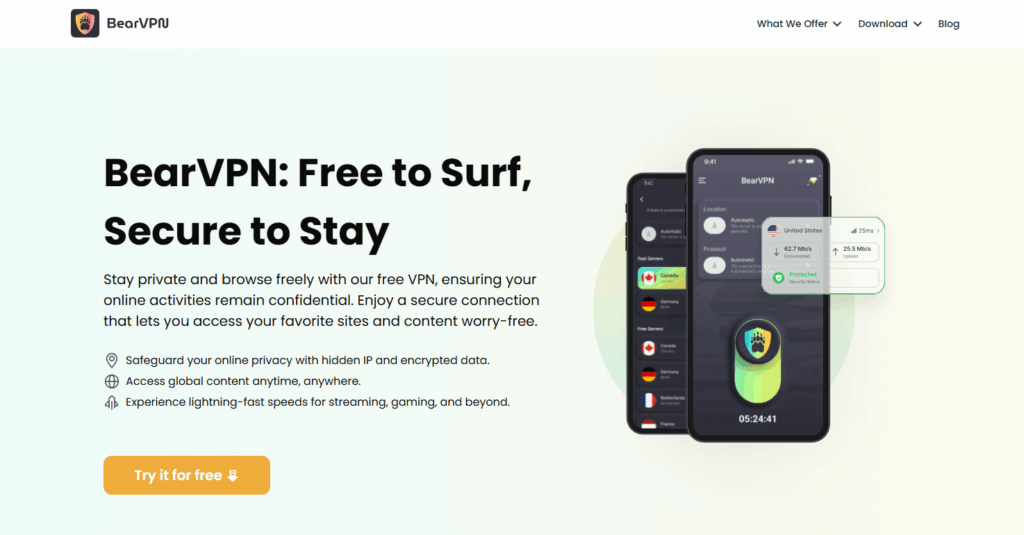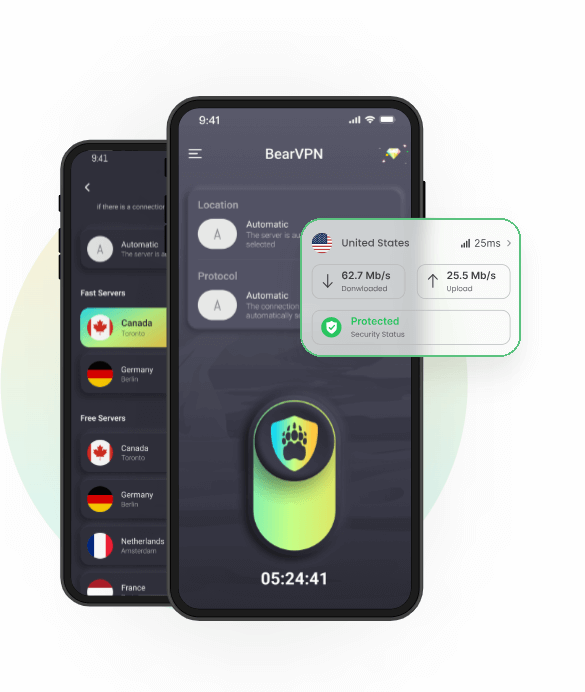Changing your iPhone’s IP address is easier than you think—and more useful than you might expect. Whether you’re trying to watch Netflix from another country or just want a little more privacy on public Wi-Fi, the ability to control your IP address puts digital power in your hands.
In this guide, you’ll learn five simple ways to change your iPhone’s IP address—no technical background required. Whether you’re looking for speed, security, or control, there’s a method here that fits your needs.
Why Change Your iPhone’s IP Address?
Your iPhone’s IP address is like your digital home address. Websites, apps, and advertisers use it to identify your location, tailor content, and track your activity. Sometimes, you might want to change it—whether to boost privacy, unblock content while traveling, or fix network glitches.
Here are some common real-world reasons:
- You’re abroad and want to access your home country’s streaming library (e.g., Netflix US or BBC iPlayer)
- You’ve been blocked or restricted by a social media platform
- Do you want to protect personal data on public Wi-Fi
- You’re testing or developing network configurations
The good news? It’s easier than you think. In this guide, you’ll learn five simple ways to change your iPhone’s IP address—no technical background required.
Method 1: Use a VPN (The Fastest & Most Secure Way)
Using a VPN (Virtual Private Network) is the most effective way to change your public IP address on an iPhone while encrypting your internet traffic to add a layer of privacy and protection.
If you need to access region-locked games or streaming services, BearVPN offers a seamless solution with over 1000 servers in 50+ countries. Designed for speed, security, and ease of use, BearVPN is perfect for users who value privacy, streaming freedom, and seamless mobile protection.

Key Features of BearVPN:
- One-tap connection: No complicated setup. Just tap “Connect,” and you’re instantly protected.
- Smart server selection: BearVPN automatically chooses the fastest available server or lets you pick one manually (e.g., US, UK, Japan, Australia).
- Unlimited switching: Hop between server regions as many times as you need—great for frequent travelers or content explorers.
- Kill switch: If your VPN connection drops, BearVPN halts internet activity to avoid accidental data leaks.
- No-logs policy: BearVPN does not collect or store any of your browsing history, IP logs, or DNS queries.
- Top-Tier Encryption: Industry-leading protocols for secure data transmission.
How to Change Your IP Address on iPhone Using BearVPN:
BearVPN allows you to change your iPhone’s public IP address in seconds—here’s how:
Step 1. Download the BearVPN app from the official website or the App Store.
Step 2. Install and launch the app.
Step 3. On the main screen, tap the “Connect” button to let BearVPN automatically select the best server for your location.
Step 4 Alternatively, tap the server list to manually choose a location (e.g., United States for streaming Hulu, or UK for BBC iPlayer).

Step 6. Once connected, your iPhone’s public IP address will be replaced with the IP of the BearVPN server.
Benefits of Using a VPN Change IP Address on iPhone:
- Quickly change your IP address to any country
- Protect data on public Wi-Fi
- Bypass streaming and game restrictions
- Easy one-tap setup
- Works with both Wi-Fi and mobile data
Method 2: Toggle Airplane Mode (For Mobile Data Users)
If you’re using mobile data, toggling Airplane Mode may assign you a new dynamic IP address from your carrier.
This method works by briefly disconnecting your iPhone from the cellular network. When it reconnects, your mobile carrier may assign a different IP address from its available dynamic IP pool.
Steps:
Step 1. Open Control Center and tap the Airplane icon.

Step 2. Wait at least 10–15 seconds to ensure full disconnection.
Step 3. Tap the icon again to re-enable cellular data.
Step 4. Confirm your new IP via an online IP checker.
When to Use This Method:
- You suspect your current IP is throttled or restricted by a site/app
- You want a quick refresh without installing new apps
- You’re testing different IPs for region-based behavior
Repeat the process if the IP doesn’t change on the first try. Some carriers require longer disconnection or use sticky IP assignments.
Limitations:
- Only works with cellular data, not Wi-Fi
- The new IP is assigned randomly, with no option to select country or region
- Not guaranteed to change every time—it depends on your mobile carrier’s network policies
This method is helpful in situations where you’ve been throttled or geo-restricted based on your mobile IP, but don’t want to install anything. However, for location-specific IP changes (e.g., choosing a specific country), using a VPN like BearVPN is more reliable. where you’ve been throttled or geo-restricted based on your mobile IP, but don’t want to install anything.
Method 3: Reconnect to a Different Wi-Fi Network
Connecting to a different network changes both your local and public IP address. This is a simple option if you have access to multiple trusted networks.
Steps:
- Open Settings > Wi-Fi
- Select a different available network
- Connect and confirm IP change via an IP checker
Real-world use:
- Trying to get past a captive portal or access limit at school/hotel
- Avoiding IP-based limits on online services (e.g., rate-limited apps)
Pro tip: Always use BearVPN on public Wi-Fi to stay secure and prevent data interception.
Method 4: Manually Configure a Static IP (Local IP Only)
If you need to change your local IP address (useful for LAN tasks or development), you can assign one manually.
Steps:
Step 1. Go to Settings > Wi-Fi

Step 2. Tap the “i” icon next to your current network
Step 3. Tap Configure IP > Manual

Step 4. Enter a valid IP (e.g., 192.168.1.220), Subnet Mask (usually 255.255.255.0), and Router IP
Step 5. Tap Save
Note: Make sure the first 3 numbers match your router’s IP. Only change the last digit (between 2–254).
Limitations:
- Affects local IP only, not public IP
- Only relevant in home or office networks for specific device configurations
Example: You may use this if you’re assigning static IPs for devices like printers or testing how your app behaves under a fixed local IP.
Method 5: Use the “Renew Lease” Option (Quick Local IP Refresh)
If your iPhone is connected to Wi-Fi, you can refresh your local IP via “Renew Lease.”
Steps:
- Go to Settings > Wi-Fi > Tap “i”
- Scroll down and tap Renew Lease
- Your local IP will likely change
This is a quick fix when your local IP conflicts with another device or you’re troubleshooting connectivity.
Bonus: Method Comparison Table
| Method | Changes Public IP | Location Selectable | Works on Mobile Data | Requires App | Best For |
| VPN (BearVPN) | ✅ | ✅ | ✅ | Yes | Streaming, privacy, geo-switching |
| Airplane Mode | ✅ (sometimes) | ❌ | ✅ | No | Quick refresh on mobile data |
| Switch Wi-Fi | ✅ | ❌ | ❌ | No | Public Wi-Fi or school networks |
| Manual Static IP | ❌ | N/A | ❌ | No | Device-specific LAN setup |
| Renew Lease | ❌ | N/A | ❌ | No | Resolving network glitches |
FAQs on Change IP Address on iPhone
Q1: Can changing my iPhone’s IP address improve privacy?
Yes. Your IP reveals your approximate location. Changing it via VPN helps shield your activity from trackers, ISPs, and even public Wi-Fi threats.
Q2: Will changing IP affect apps like Netflix or YouTube?
Yes—positively. Changing your IP to another country can unlock region-restricted content on streaming platforms.
Q3: Is it legal to change your IP address?
In most countries, yes. Using a VPN to change your IP is legal, especially for privacy or bypassing censorship. But always follow the terms of service of websites you visit.
Q4: What’s the difference between public and local IP?
- Public IP: Assigned by your ISP or VPN, visible online
- Local IP: Assigned by your router for device identification within your home network
Q5: What happens if I enter the wrong static IP?
If the static IP isn’t in the correct range or conflicts with another device, you may lose connection or receive an IP conflict warning. You can revert by choosing “Configure IP > Automatic.”
Q6: Can I change my IP without installing any app?
Yes. Methods like Airplane Mode, Renew Lease, or manual configuration do not require additional apps—but they don’t give you control over IP location like a VPN does.
Q7: My IP didn’t change after trying a method. What should I do?
Some ISPs and mobile carriers use persistent IPs. In that case, try a different method—VPN is the most reliable way to force a public IP change.
Conclusion
Changing your iPhone’s IP address gives you more control over your digital life—from safeguarding privacy to unlocking content around the globe. Whether you prefer a quick VPN tap or digging into manual network settings, the methods above let you choose the level of simplicity and power you need.
To get the most flexibility and control—especially when accessing content abroad or protecting your data on public Wi-Fi—BearVPN is your best ally.



